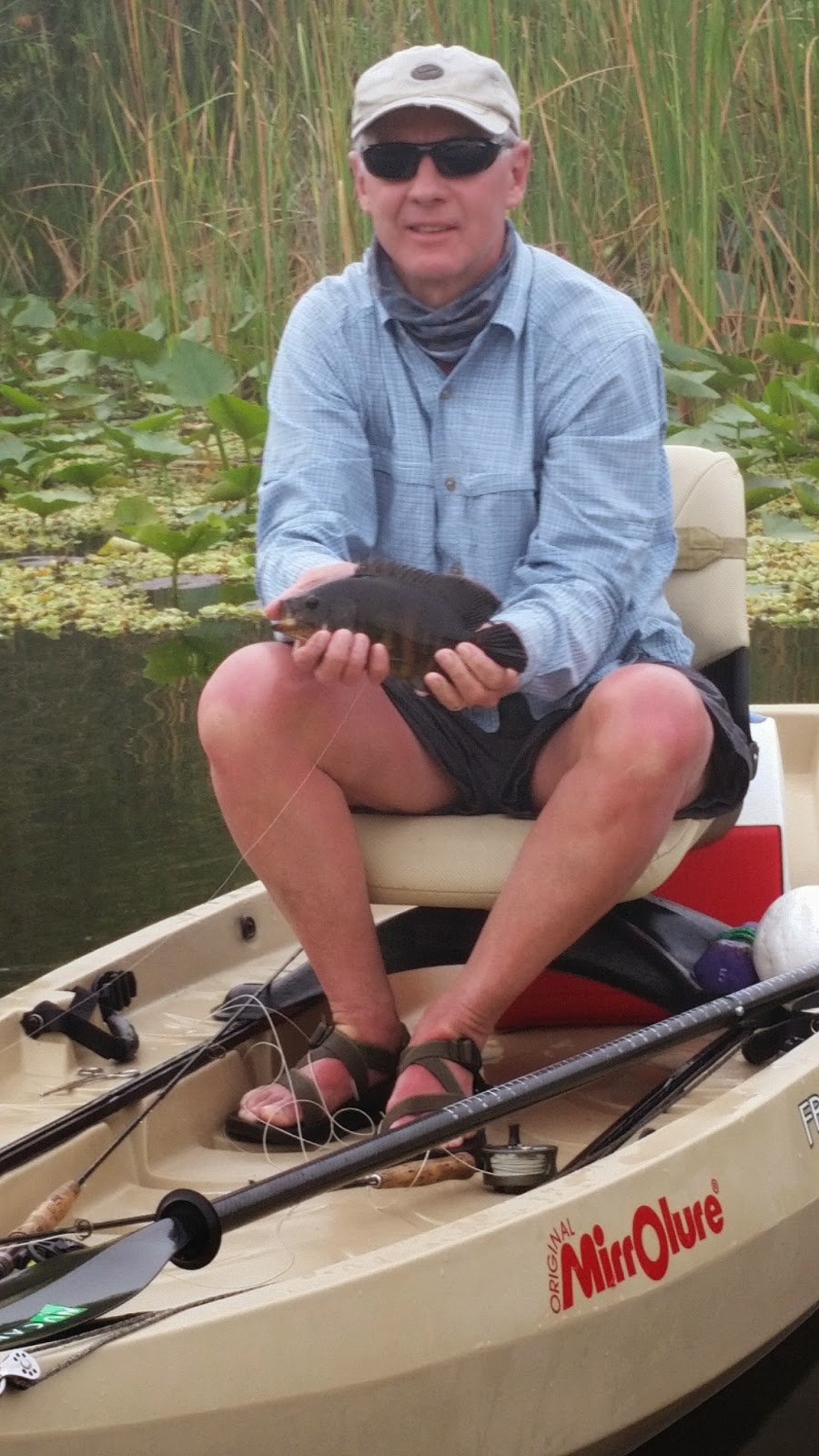I received an email from fly angler Howard Beamer about
catching fish in The Everglades and, in particular, on my Myakka Minnow.
Beamer had fished a canal along the Tamiami Trail a day
prior to a trip I made. He found conditions pretty tough.
 |
| A school of Myakka Minnows ready to catch fish. |
"I talked to Joe Mahler yesteday and he said you got 75
oscar the day after we fished the same area," Beamer wrote. "OK, so
what's your secret?
"I used your Myakka Minnow and only landed three. What
a blast!
"I had never caught an oscar before."
His appetite for the diminutive panfish has been whetted.
He will satisfy that hunger once he understands how to fish
The 'Glades and how to fish the Myakka Minnow.
To newcomers, the shorelines of every canal down there look
the same.
But they're not.
They're are subtle differences that can make the difference
between catching a lot of fish and catch just a few.
For the most part, the shoreline consists of lily pads,
bulrushes, rocks and trees. The key to success is to determine what structure
the fish are hanging around. Once you figure that out, you can pinpoint them
and eliminate those areas not holding fish.
On my trip, the fish were around pockets in the lily pads,
and, in particular, pockets in the pads in front of trees. We caught very few
fish casting to the front edge of the pads.
Once my client, Rob Halupka of Toronto and I figured that
out, we caught fish consistently.
Over the course of the day, we caught 75 oscar, 30 bluegill,
15 stumpknocker, 12 Mayan cichlid and maybe six largemouth bass.
Not a bad day.
Once I located the fish, it still took my client a while
before he figured things out.
Accurate casts are a must. If you miss your target, how can
you expect to catch a fish?
When fishing from a kayak, you don't need to be any more
than 20-25 feet from your target. That's the beauty of paddle craft.
Only take out the amount of fly line you need to cast. If
you're trying to make a 25-foot cast, there's
no reason to have more line than that off your reel.
Be alert at all times.
On many occasions, I would see a tell-tale wake heading
toward the fly when it hit the water. That was my signal that a fish was about
ready to inhale it. Most of the time, they did.
Watching the end of your fly line is very important. After
casting the Myakka Minnow to a likely looking spot, I let it sink. I would
strip it in slowly in one-inch increments.
Most of the time, I didn't feel a hit. I saw the line dart
to the left, dart to the right or dart straight ahead. That was the signal that
a fish had taken the fly and to set the hook.
On some occasions, the line simply wouldn't move when I
stripped it. That also was a signal.
"Those fish sure hit lightly," said Halupka, an
experience fly fisher. "I'm sure there
were plenty of times that a fish took the fly and I didn't know it."
Another important technique is to keep the tip of your fly
rod at the water's surface or even in the water. That eliminates slack line and
helps you detect hits a little better.
As with any fly, the Myakka Minnow isn't magic. If the fish
are hitting small minnows, it will work -- provided it's fished correctly. Most
of the time, correctly means slowly.
When fish are visibly aggressive, you can speed things up a
bit.
Let the fish tell you what they want. They will -- if you
let them.






